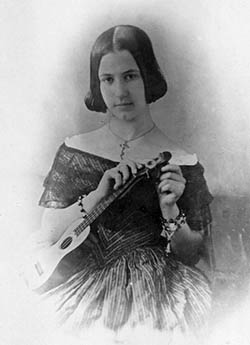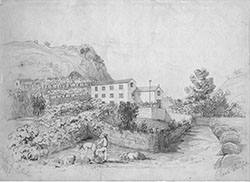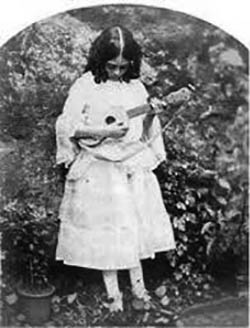Clara PHELPS 1831 - 1897
Seventh child of Joseph Phelps (1791–1876) and Elizabeth DICKINSON (1795–1876)
Born 19th February 1831, Funchal, Madeira.
Died 1st November 1897, buried at Chislehurst, Kent.
Married 21 January 1860 at St James, Piccadilly to John OAKLEY (1834–1890)
Clara and John had seven children:
Frank Page (1862 –1943)
Clara Margaret (1864 –1949)
Lucy Violet Ellen (1865 –1932)
Mary Dorothea Katherine (1866 –1936)
Roland Edward George (1868 –1905)
Ernest Peyton John de Brissac (1870 –1934)
Phillis Rosamund (1872 –1940)
London
Clara suffered from back trouble in her teens and in 1848 she was sent to her aunts in London, who sent her to Mr Jago. He was a surgeon, married to a niece of Robert Page, and his treatment eventually cured Clara's problem. She then spent a number of years living with her Phelps aunts and uncles in London.
John Oakley
Back home in Madeira that she met John Oakley who, in 1855, had come to tutor the children of a local English family. Although they formed an attachment, he was not in a position to marry so they had a very long engagement. During the years of waiting, Clara helped her sister Bella with the work of the embroidery enterprise.
Artist
None of the letters mentions Clara's skill as an artist, but some of her drawings have come to light in recent years. She made sketches dated 1845, of various musicians playing their instruments, and her great grandson recently heard that "a collection of drawings of landscapes, trees, etc, pencil and white chalk on paper, some signed and dated in the 1840s by Clara Phelps" was to be auctioned and he managed to buy them.
Clara and John Oakley were eventually able to marry on 21 January 1860. He rose to be Dean of Carlisle and later Dean of Manchester.
Clara's musical accomplishments were singing (coached by a visiting German professor) and playing the machete de braga, a sweet-sounding stringed instrument native to Madeira. She seems to have kept up her performances with this instrument in later years and there have been suggestions that she gave public recitals and also taught pupils. Her own lessons with the machete began in Madeira under Candido, a noted exponent who collected music for this instrument, and possibly wrote one or more pieces especially for her.
Musical Instrument
The 19th-century Madeiran ‘Machete’ or ‘Machetinho’ (‘little machete’) - commonly known as the Braguinha - is a small musical instrument with a body in the shape of an eight, a long neck, and four or five single strings. This small hand chordophone (plucked string instrument) forms part of the large and diverse family of late fifteenth-century Portuguese hand guitars, of which it is the soprano. The earliest mention of the ‘machete’ (also known as the ‘machinho’) as a musical instrument, is to be found in Raphael Bluteau’s ‘Vocabulário’, from 1716: “Machete. Small guitar” (“The machinho is also a small guitar”); “it comes from the Latin, macer, thin, slim”. On the Isle of Madeira, in the last quarter of the 19th century, the instrument is referred to as the ‘Machete de Braga’, coming to be known as simply the ‘braguinha’ by the end of that period. (Machete / Braguinha by Manuel Morais)
A Madeiran girl practises her Machete.
Clara and John had seven children and Clara died aged 66, never having been back to Madeira after her marriage.
Mrs Oakley and Her Machete An extract from "The Machete of Madeira: A British Perspective."


